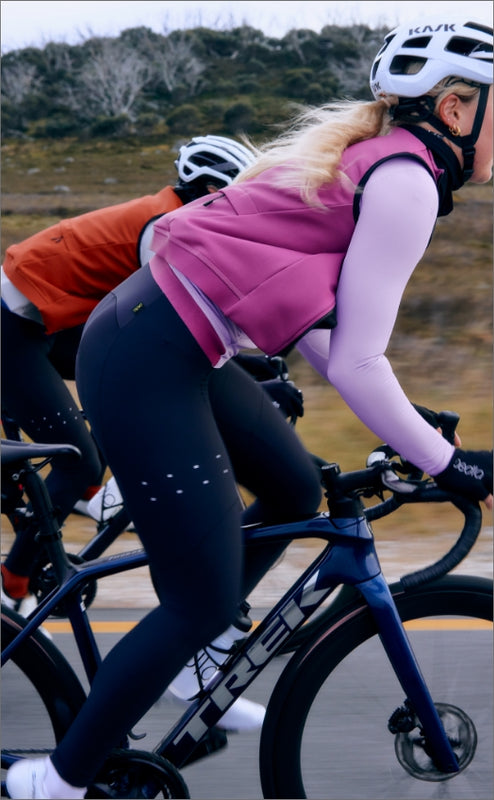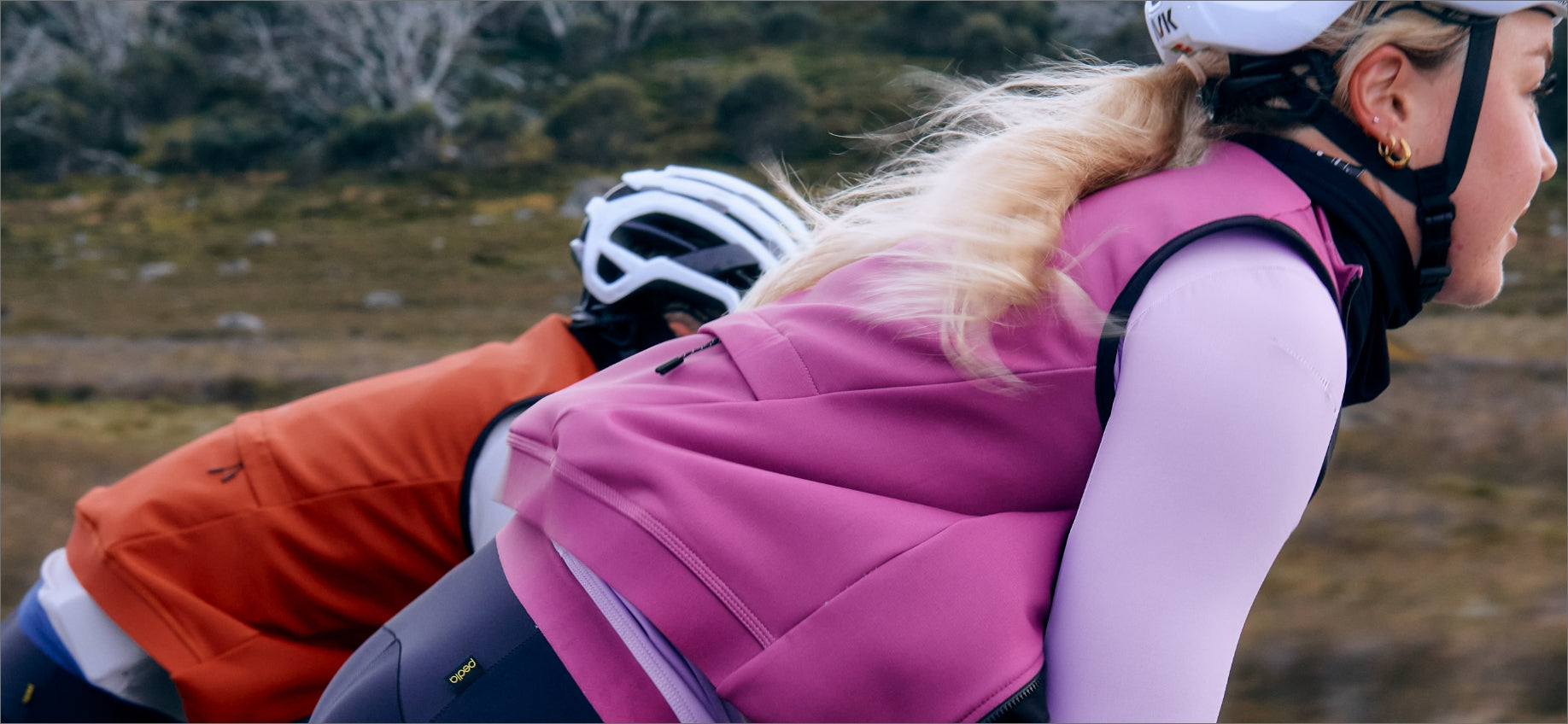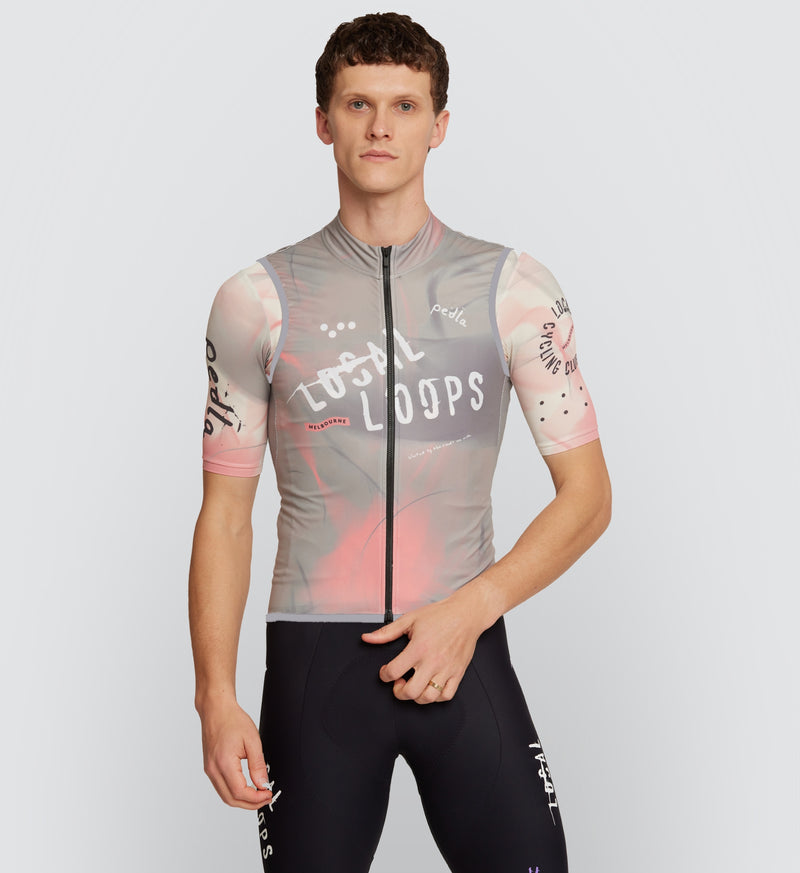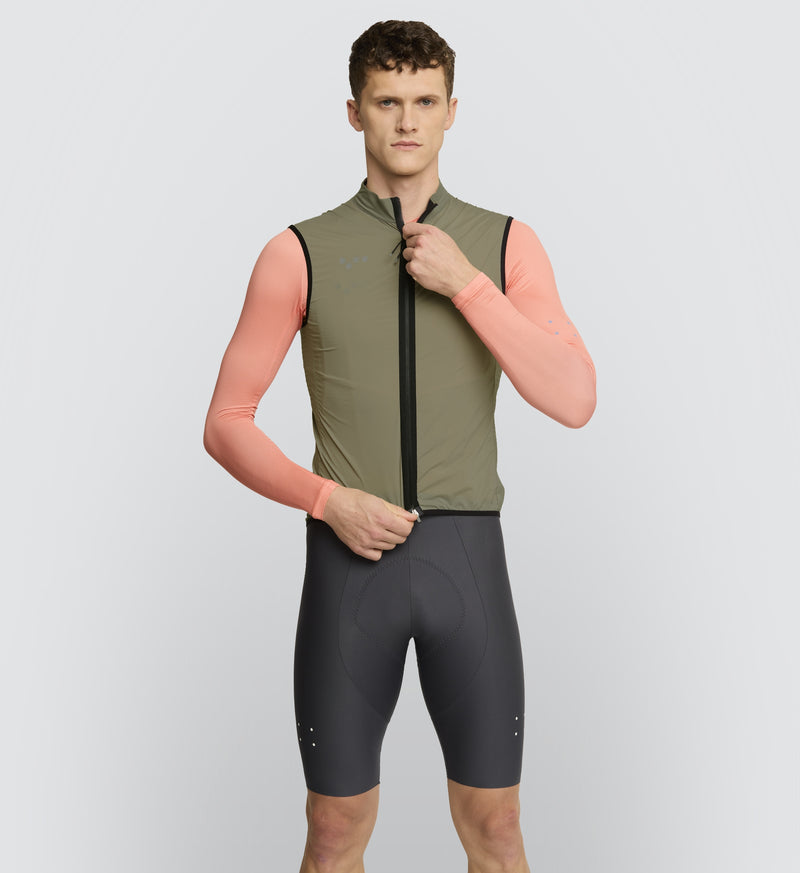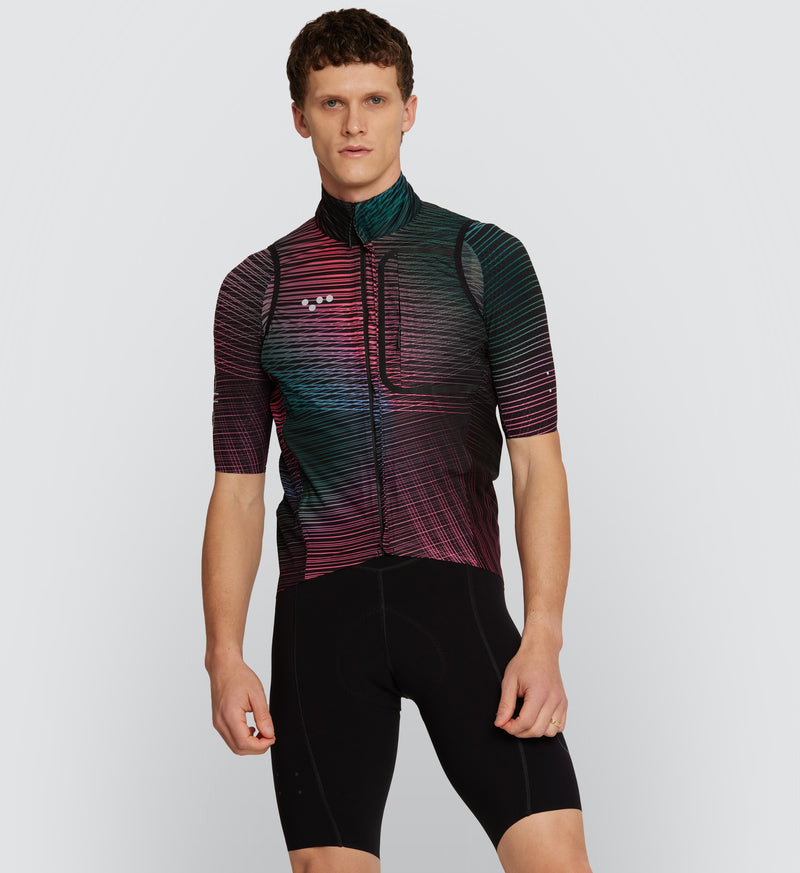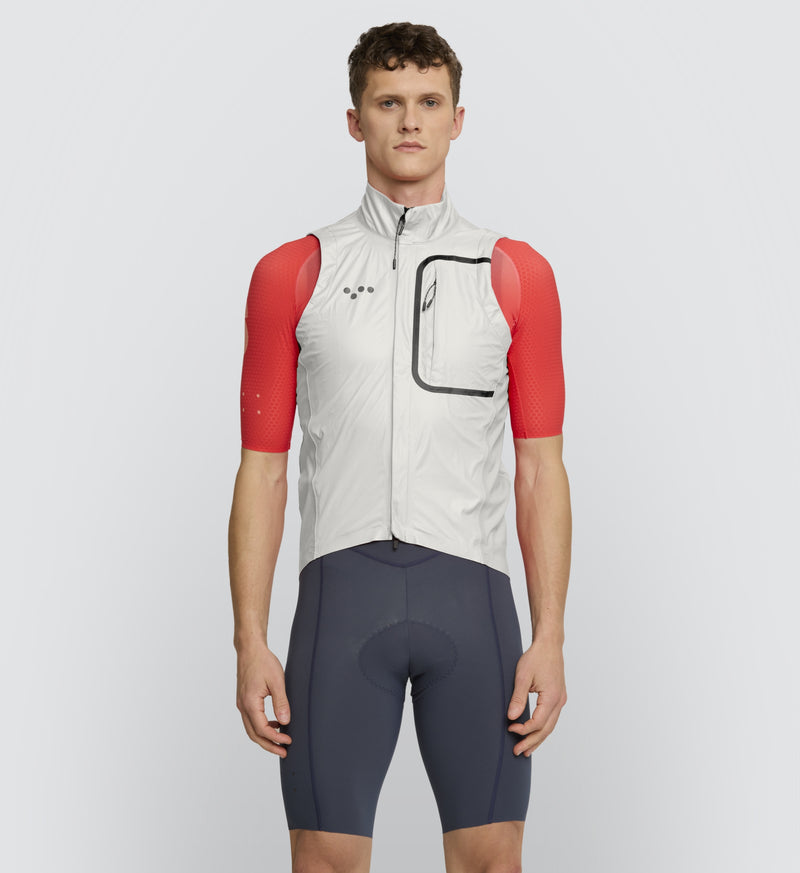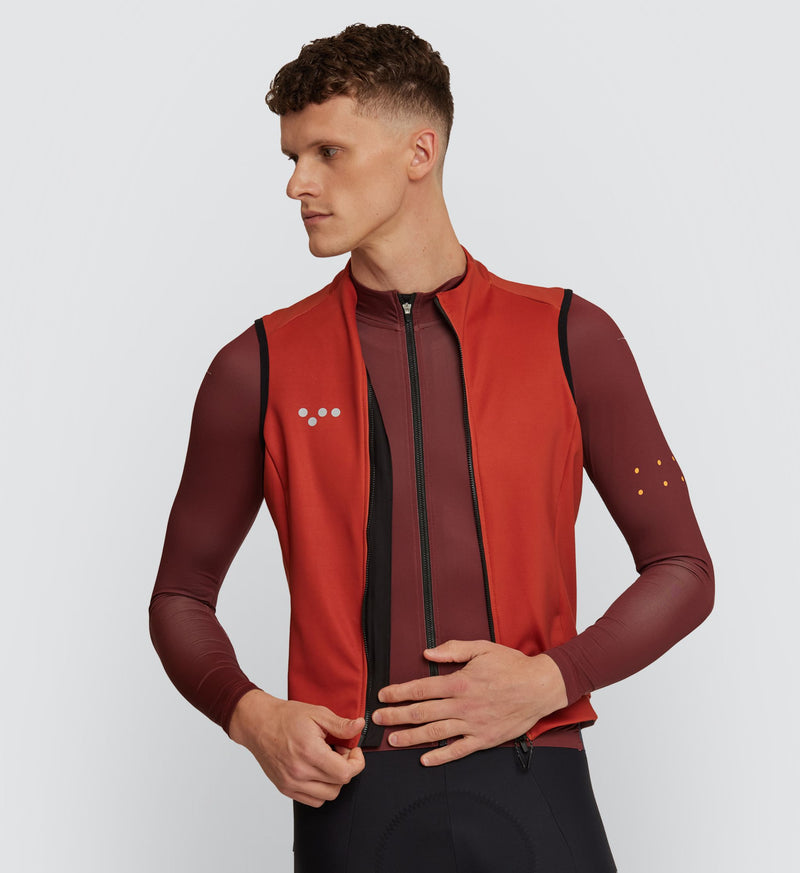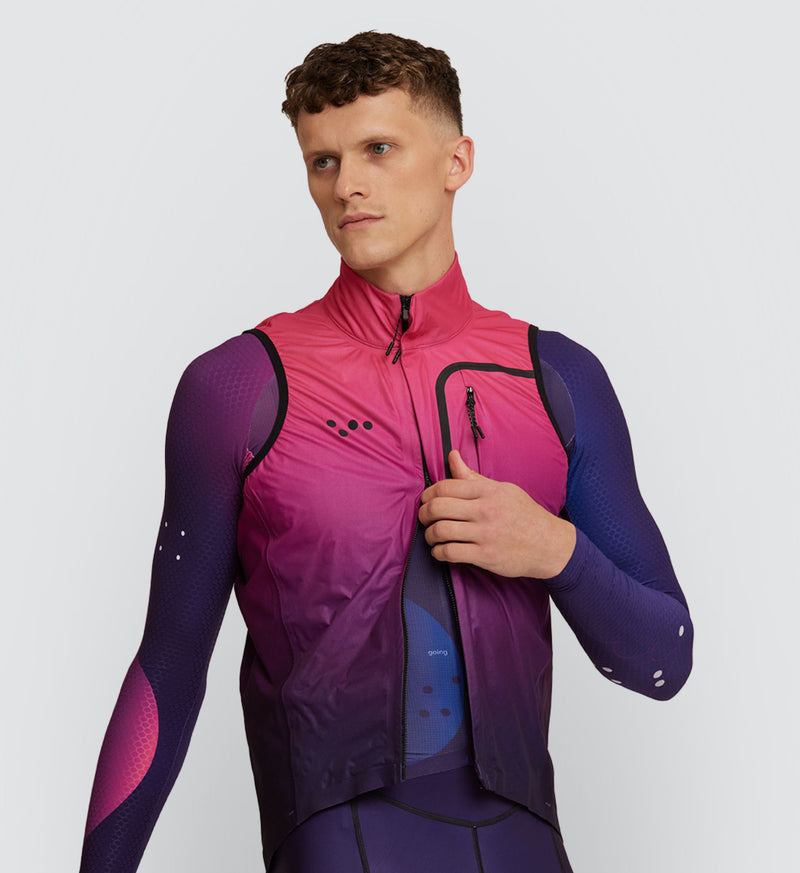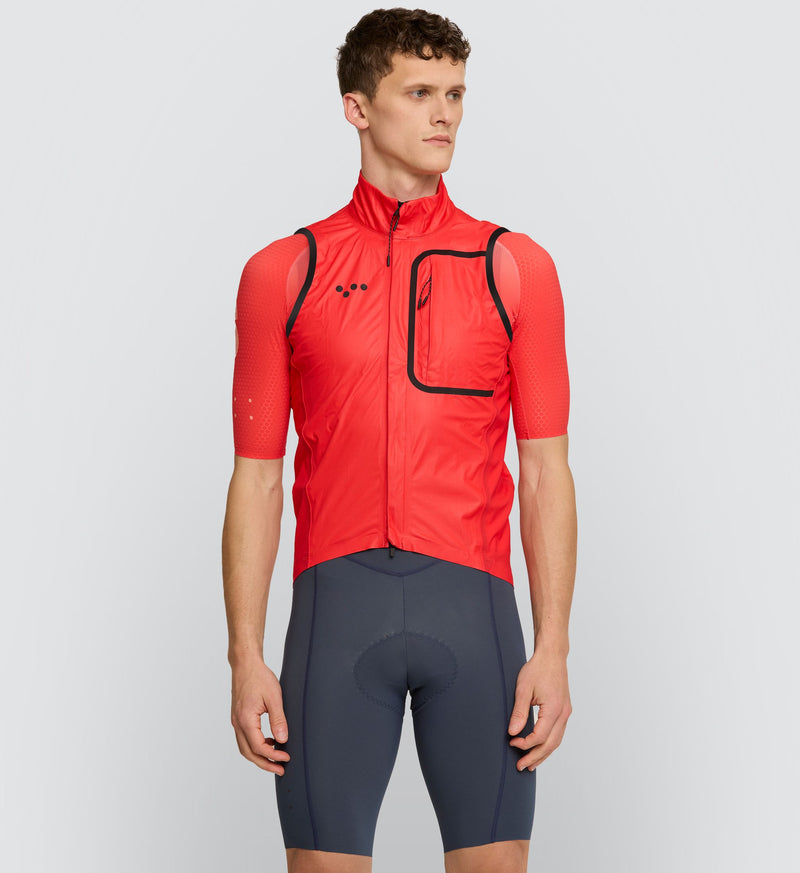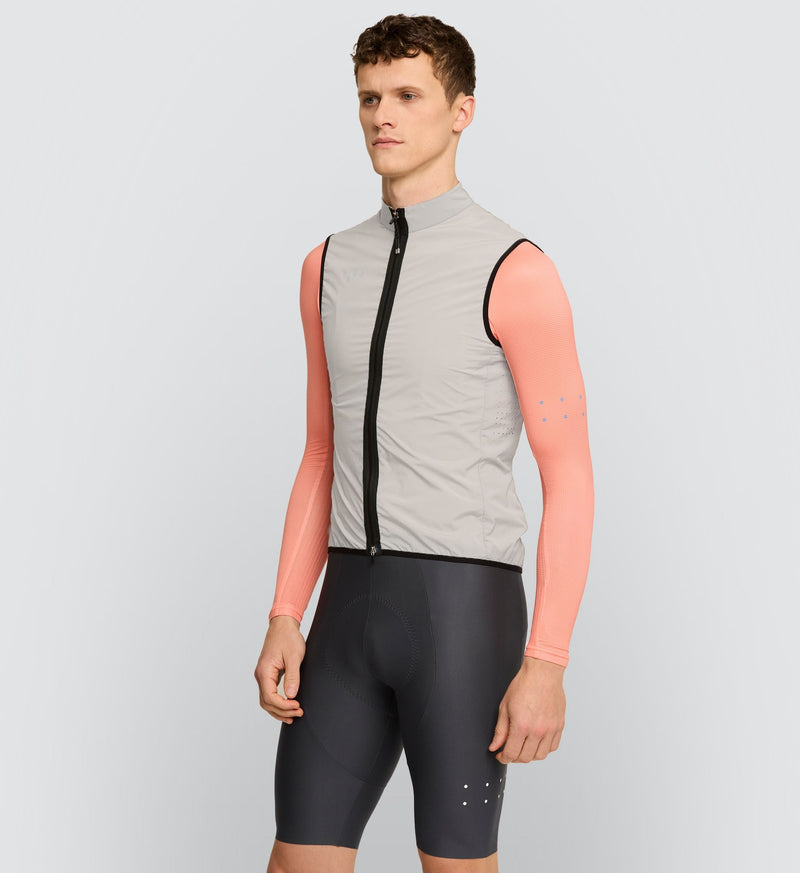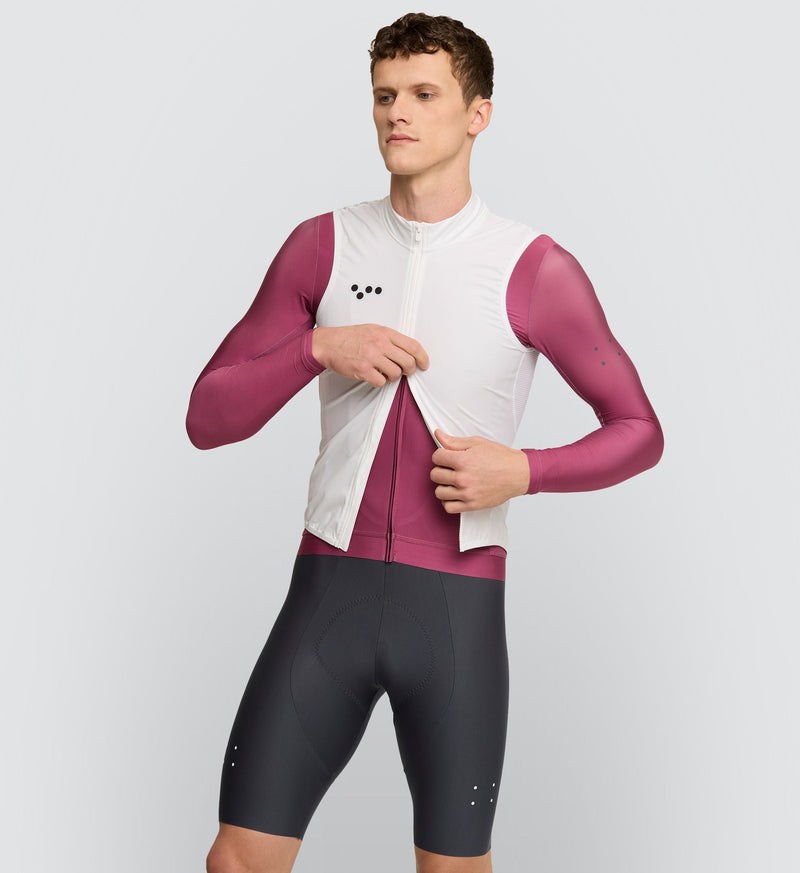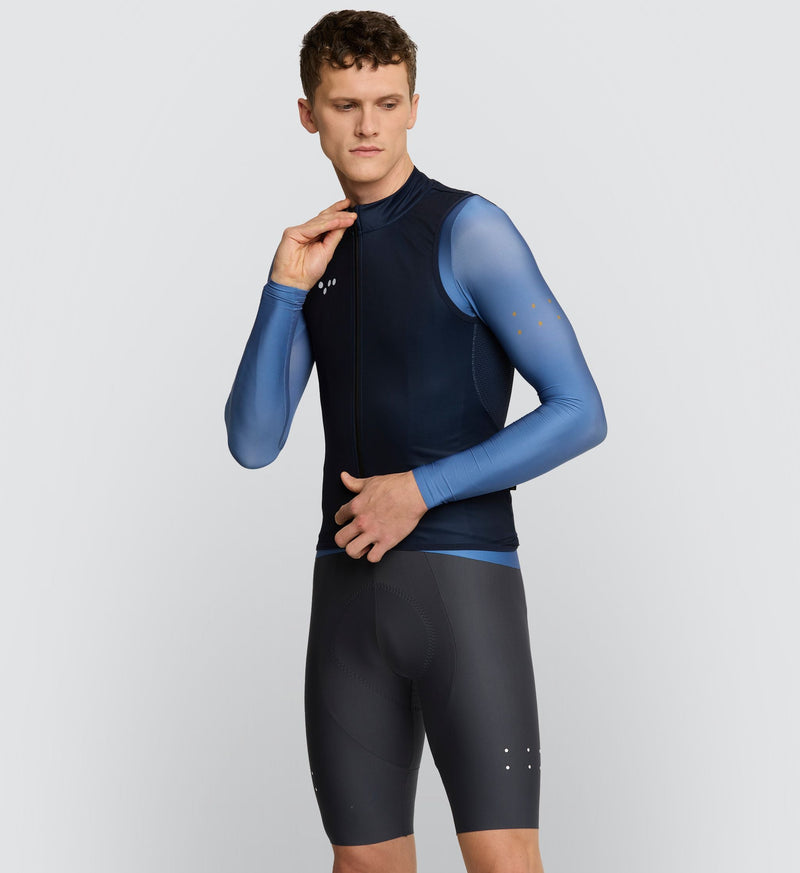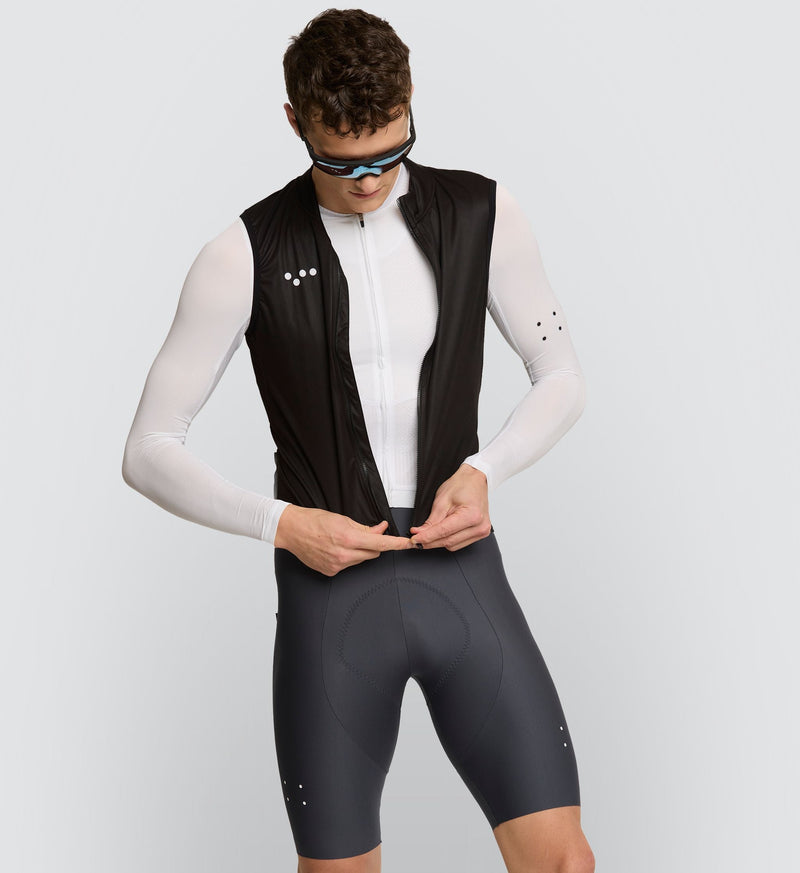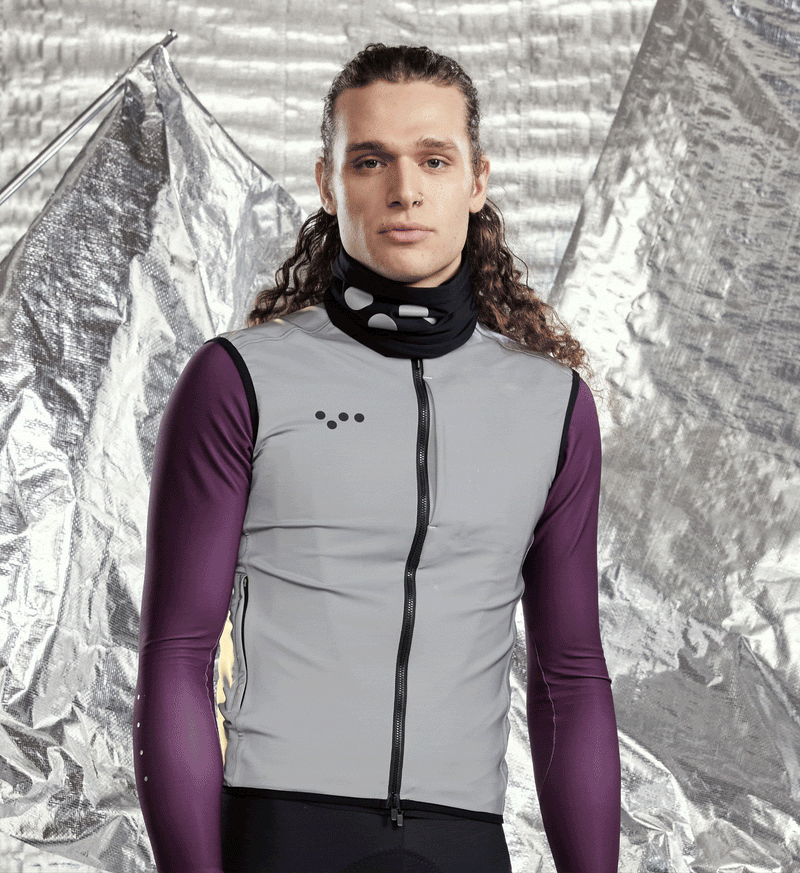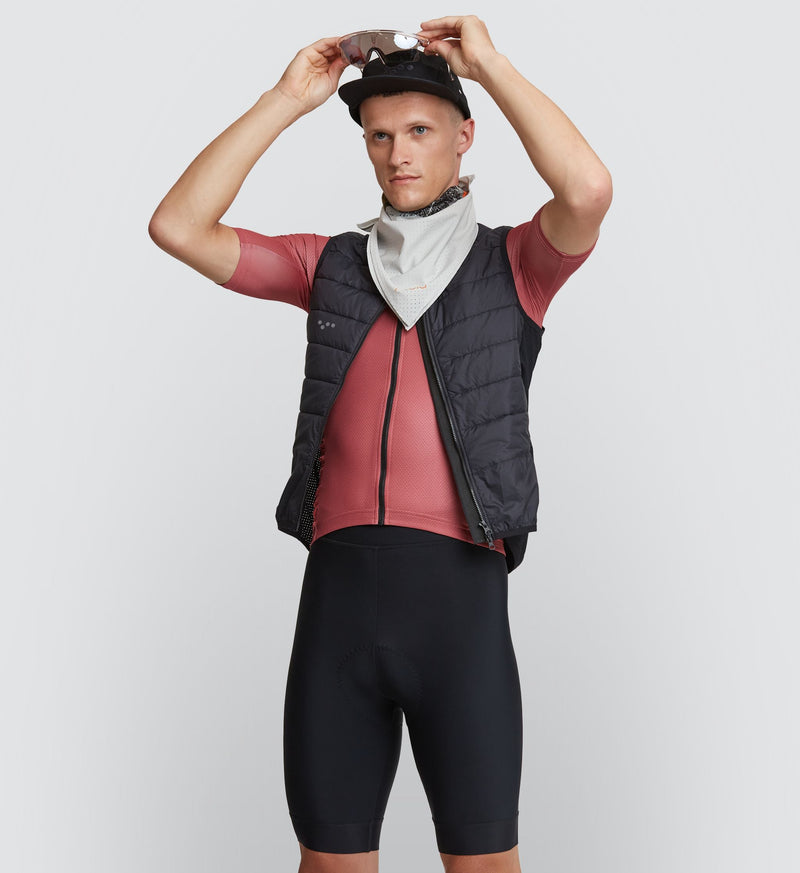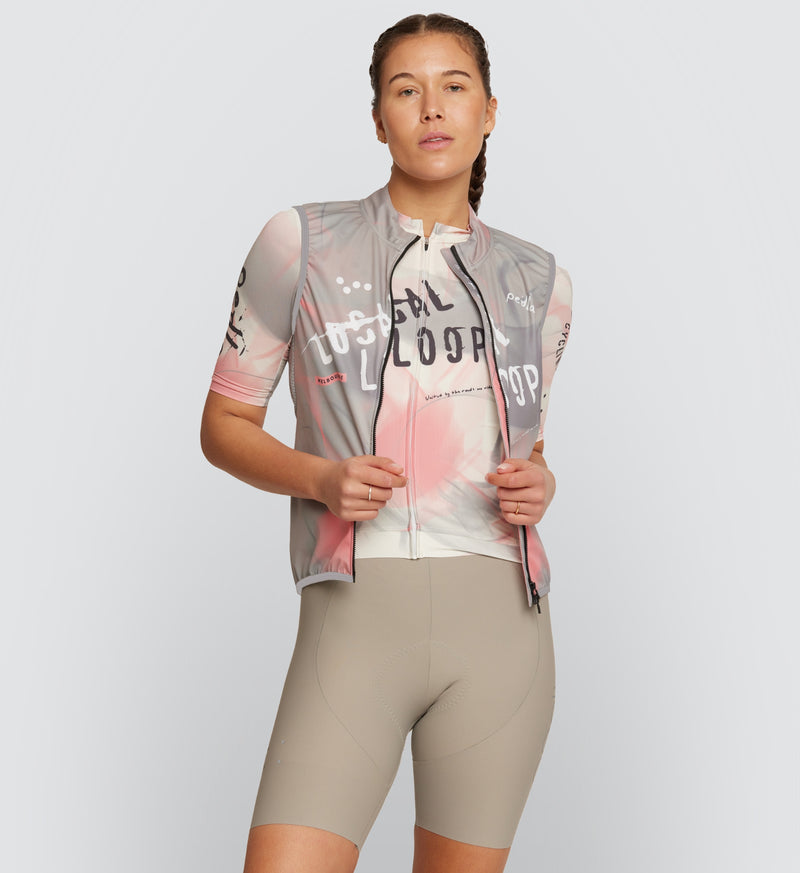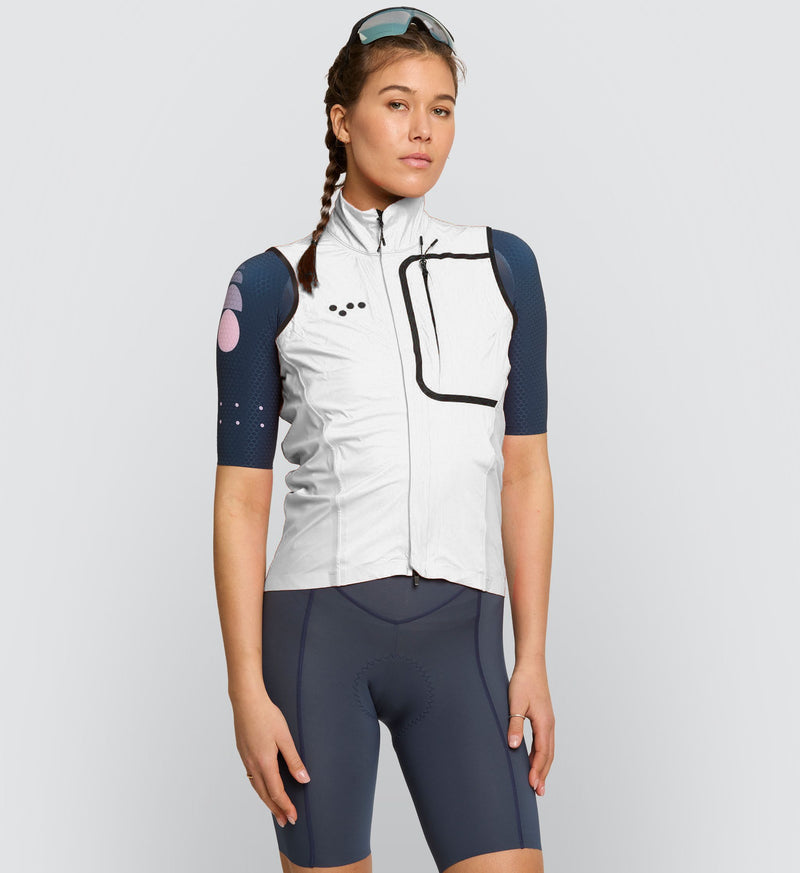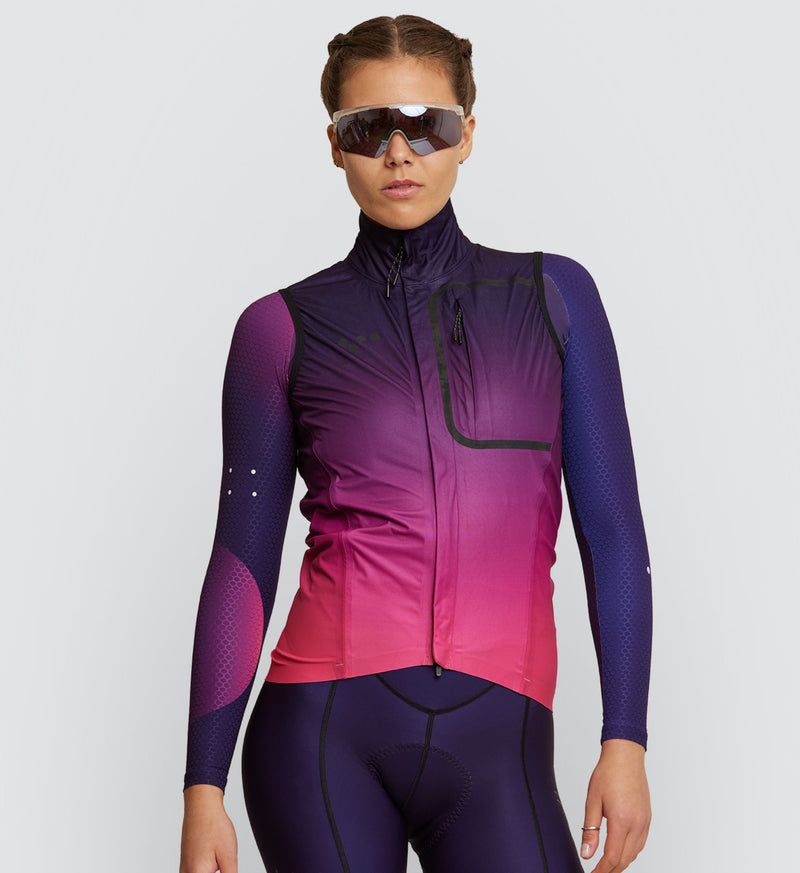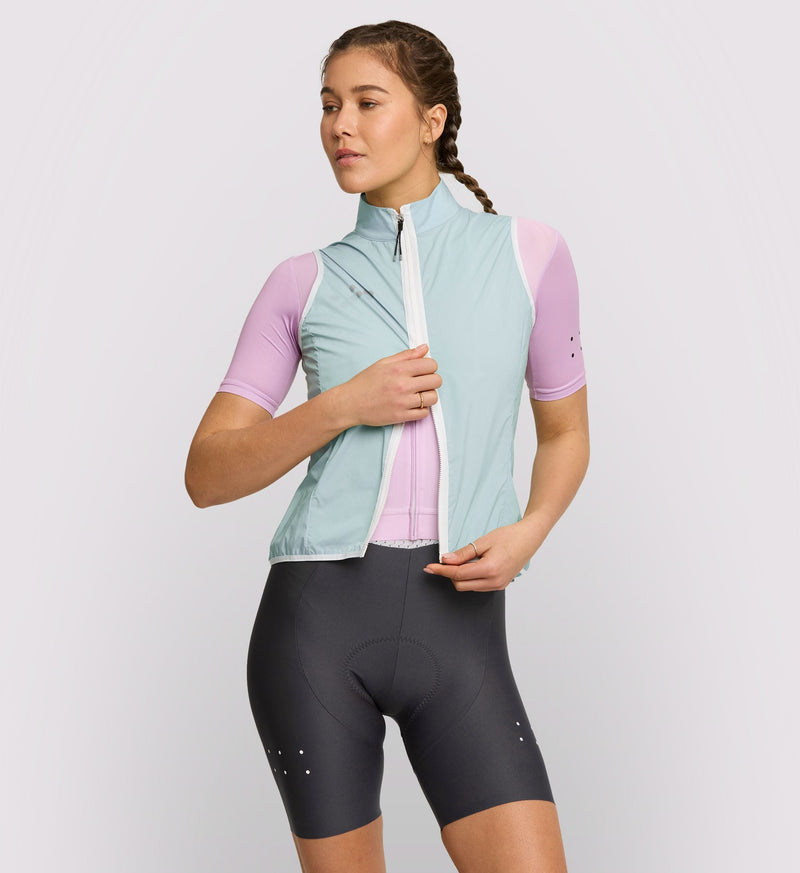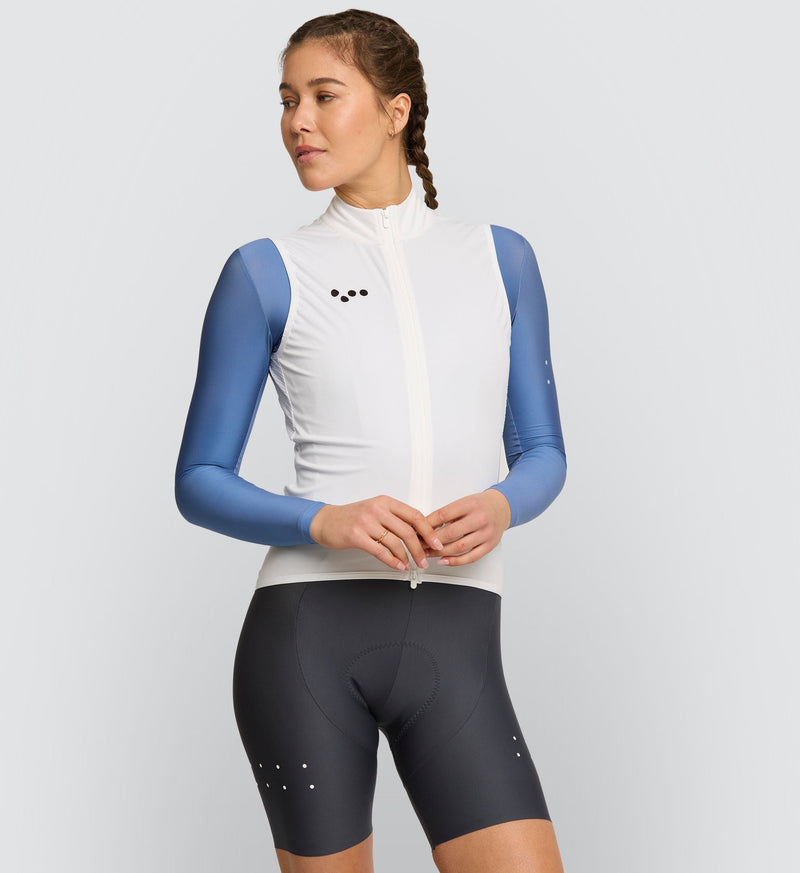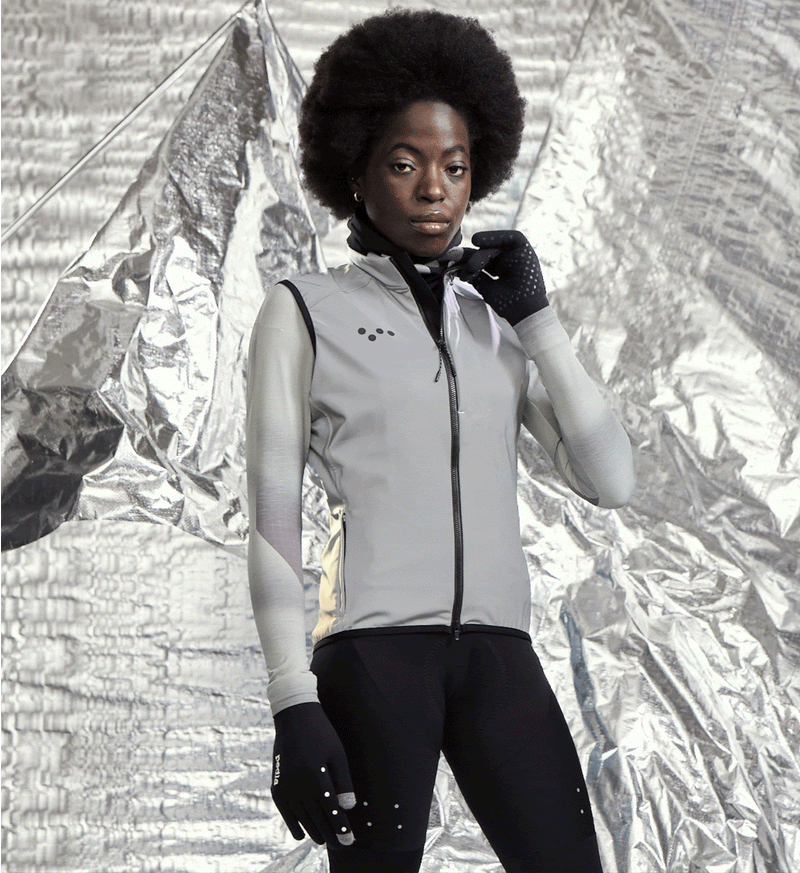Ultimate Cycling Gilet Guide | Everything You Need to Know About Cycling Gilets and Vests
We love Cycling Gilets. There, we said it. But why? What makes this quiet-achiever of the cyclist’s wardrobe so indispensable on the ride?
Zip it up. Zip it down. Let it excitedly flap about in your self-propelled wind. Take it off. Roll it up. Stash it in your jersey pocket until it’s called up for duty again.
Light. Breathable. Durable. A protective layer between you and whatever the forecast has in mind for your ride. And let's be honest, sometimes the missing ingredient that really makes your ‘fit’ stand out and shine!
So buckle up (or zip up) as we take you through The Pedla guide to ‘Everything you need to know about cycling gilets and vests’ — the unsung heroes of the ride. Let’s go!
Contents
- What is a cycling gilet?
- What is the difference between a cycling gilet and a vest?
- What is the point of a cycling gilet?
- Do I need a cycling gilet?
- When to wear a gilet cycling? What should I look for in a cycling gilet? What are the benefits of a cycling vest?
- What types of Cycling Gilet are there? What is the best cycling gilet?
- Should I choose a cycling gilet or cycling jacket?
- Can I wear a cycling gilet and jacket?
- Should a cycling gilet be tight or loose?
- Should a cycling gilet be a size bigger than my jersey?
- How should I take care of my cycling gilet?
- A guide to Pedla’s Gilet range
What is a cycling gilet?
A cycling gilet (also known as a cycling vest) is a versatile piece of clothing essential to a cyclist's wardrobe.
Cycling gilets have an interesting history intertwined with the evolution of cycling apparel. In the early days, cycling gear wasn’t too different from everyday clothing. But as cycling grew in popularity as both a sport and mode of transportation, the need for specialised clothing arrived. Google Trends shows that the interest online for cycling gilets really exploded in 2010.
Gilets became popular because they offered a practical solution for cyclists who needed core warmth without restricting arm movement, crucial for comfort and performance; especially in variable weather. They evolved from simple garments to incorporate technical materials like windproof and water-resistant fabrics, reflecting the sport’s growing focus on aerodynamics and comfort on the bike.

What is the difference between a cycling gilet and a vest?
In cycling terminology, a gilet; pronounced “ji-lay" (just imagine you’re saying it with a French accent) and a vest, refer to the same garment: a sleeveless jacket that serves as a lightweight layer for variable temperatures. Its core function is to add a layer of insulation without increasing bulk, making it ideal for cycling. The sleeveless design means that it doesn’t restrict movement, which is perfect for cycling where flexibility and minimal bulk are always welcome.
What is the point of a cycling gilet?
A few simple (but key) points on the point of a cycling gilet for you:
- Flexibility: Easily adjustable with zippers for temperature control if it gets hot.
- Convenience: Lightweight and compact, easy to carry during rides.
- Core Warmth: Provides warmth to the torso without the bulk of a full jacket.
- Wind Protection: Effective at shielding against wind, especially in cooler conditions.
- Rain & Road Spray Protection: Stops the road spray and even rain getting to your core.
Do I need a cycling gilet?
Good question. Obviously, our years and many thousands upon thousands of kilometres on the bike would give a resounding ‘Yes’ you do need a cycling gilet, but here’s a few things to consider:
- Warmth: Gilets are effective (like really super effective) at keeping cold air off your upper body, enhancing warmth and comfort.
- Lightweight: A gilet offers warmth without the bulkiness of a full jacket, hence way lighter.
- Versatility: Gilets serve as a "middle ground" between no protection and a full cycling jacket, suitable for milder conditions. Hmm… the jacket you have when you don’t want a jacket? Kinda.
- Road Spray: Because nobody likes all that road gunk spraying up all over the back of their hot new jersey, right?
Comment
byu/duhuj from discussion
incycling
When to wear a gilet cycling? What should I look for in a cycling gilet? What are the benefits of a cycling vest?
When to wear a gilet cycling? This entirely depends on where you’re riding and what sort of weather you can expect on the ride! Gilets are incredibly versatile and can be suited for a variety of conditions and riding styles, from casual rides to competitive racing. They provide protection and comfort whether you're cycling in hot or cold weather. In warmer conditions, lightweight and breathable gilets offer wind resistance and sun protection without causing overheating. On the other hand, insulated gilets are perfect for cooler weather, providing an extra layer of warmth while maintaining mobility.

Choosing the right gilet for the occasion—be it a windproof option for brisk mornings, a waterproof gilet for rainy rides, or a high-visibility model for low-light conditions—ensures you stay comfortable and protected, enhancing your overall riding experience.
When cycling if rainstorms are on the horizon, look for waterproof, breathable fabrics across all panelling, front and rear. When looking at fabrics and materials (like eVent fabric), ratings are provided in the form of water column and water vapour pass through volume. It will appear something like this: ‘20K Waterproof/20K Breathable’, or simply ‘20K/20K’.
All you need to know is, the higher the first number the more waterproof it is, and the higher the second number the more breathable it is.
If you’re looking to stay warm, there are two main types of insulation to look out for. Both offer benefits and have their downsides, and it’s up to your style of riding to determine which suits you!
Fleece insulation is the more ‘traditional’ of the two, and is often more breathable, and uses materials that can be printed and vary in colour - in contrast, down or ‘puffer’ insulation is lighter-weight, less breathable often only is available in block colours, if not just black.
A popular type of gilet are those that are reflective. Unfortunately many reflective fabrics are not breathable at all, and many don’t feature stretch so getting the right fit is important. It is also important to remember that not all reflective fabrics are created equal. Look for claims on how far away the reflective garment is visible from, the longer the distance the better.
Gilets are also in their element when they are stowable. A great use for them is for when you reach that fast descent, and want some protection from the gusts. These lightweight and packable gilets are often made from very thin and light materials, providing just enough wind and water resistance for the job at hand. They will pack down into themselves so they fit neatly into a jersey pocket, and provide protection when you need it.
When considering a cycling gilet, it's essential to recognise that men's cycling gilets and women's cycling gilets can have very different fits to accommodate body shape differences. Women's cycling gilets are often tailored with a more tapered waist and wider hips to ensure a snug yet comfortable fit, enhancing aerodynamics and comfort. Conversely, men's gilets typically have a straighter cut with broader shoulders and a roomier chest area. This gender-specific tailoring ensures that both men's and women's gilets provide optimal fit and performance. Ensuring you choose the right fit for your body shape is crucial for comfort, efficiency, and overall enjoyment on the bike.
What types of Cycling Gilet are there? What is the best cycling gilet?
Where do we start with this one! There are many types of cycling gilets, each serving different purposes. The best cycling gilet is the one that has you most prepared for the road and weather ahead. Here’s a pretty solid overview of the main types you’re likely to come across or consider adding to your roadwear wardrobe:
- Windproof Gilets: This type does what it says on the tin (or gilet) — protect against wind. It’s also lightweight and packable.
- Waterproof Gilets: You guessed it, they keep you dry! Great in light rain & often also water-repellent.
- Insulated Gilets: These will give you added warmth on those colder rides; often incorporating materials like synthetic insulation.
- Packable Gilets: Yep, they’re packable. Lightweight and easy to whip off, fold up and stash in your jersey pocket.
- High Visibility Gilets: Feature bright colours and reflective elements for low-light conditions to help you be seen. Be seen in the RideFLASH Gilet.
- Mesh-back Gilets: Built to breathe. Ideal for warmer rides while still giving you wind protection.
- Race-fit Gilets: Aerodynamic. Form-fitting. Engineered to go as hard and fast as your ambitions. Designed for racers.
- Casual or Off-bike Gilets: Form meets function. Designed to look great both on and off the bike.
Should I choose a cycling gilet or cycling jacket?
Should I choose a cycling gilet or cycling jacket? Good question. Let’s take a look at both the pros and cons of choosing a cycling gilet or cycling jacket:
The (Gilet) Goods:
- Better ventilation, reducing sweat (important for riders who overheat easily).
- Convenient for layering, particularly with arm warmers.
- Compact and easy to pack away during a ride.
- Offers sufficient warmth with minimal bulk, ideal for variable conditions.
- Popular for their versatility in combination with base layers and long sleeve jerseys.
- Easier arm movement due to sleeveless design, enhancing comfort during rides.
The (Gilet) Less Goods:
- Doesn’t provide arm coverage, which can be a disadvantage in colder conditions where extremities get cold first.
- Limited protection in wet conditions compared to full jackets.
The (Jacket) Goods:
- Provides full coverage (including arms) which is better for colder or wet conditions.
- Generally more effective at keeping the entire body warm and dry.
The (Jacket) Less Goods:
- Can sometimes get too warm! Leading to excessive sweating especially during intense rides.
- Less flexible in terms of packing and adjusting during the ride compared to gilets.

Can I wear a cycling gilet and jacket?
One thing’s for sure, you likely wouldn’t wear a gilet over the top of your jacket as they tend to fit more snug. But there may be those times where you’re really not sure what the weather’s going to do, and so might have a packable jacket stashed in the rear pocket of your gilet ready to whip out and on when Mother Nature turns on you.
It’s not uncommon for riders in changeable conditions, or super cold temperatures to wear jersey, gilet, jacket - in that order. At the end of the day, it’s entirely up to you and the conditions you’ll be riding in.
Should a cycling gilet be tight or loose?
Generally speaking you want your gilet to ride on the more fitted side. The more it hugs your body, the less it’s going to flap about, puff up, or create drag as you power along. Any air that sneaks in the collar or waist hemline will just cool you down. But of course, like everything there are always variables and personal choices within that. These pointers below should help in your decision making:
- General Fit Considerations: The fit of a gilet should match your intended use—tighter for competitive riding to minimise drag, a little looser for casual or off-road cycling for comfort and layering flexibility.
- Racing or Intense Riding: Go for a tighter fit to reduce drag and enhance performance.
- Casual or Off-Road Riding: A looser fit is more comfortable, providing a relaxed feel during leisurely rides. But… by loose we don’t mean ‘fits like a tent’! Just a little more relaxed, less tight.
- Weather Dependant: A snug fit is to your advantage in windy conditions to keep your body aerodynamic and warm. In contrast, a slightly looser fit can be advantageous in milder weather to improve air circulation.
Should a cycling gilet be a size bigger than my jersey?
We size grade all our gilets to match our jerseys - that is to say, whatever size your jersey is, that’s your gilet size! If you’re in doubt, reach out to our rider support team, consult our size charts or if you’re based in Melbourne, come past our store in Collingwood to try them on.
Rider Support Team: support@thepedla.com
How should I take care of my cycling gilet?
Proper care of your cycling gilet ensures it remains in top condition and extends its lifespan. While the following instructions are tailored for our garments, it's essential to always refer to the manufacturer's specific care guidelines for best results. For Pedla’s gilets:
Gilet and Vest Washing Instructions:
- Wash cold (below 30°C), by hand or sportswear cycle in a machine.
- Use activewear-specific or mild, biodegradable detergent.
- Fasten zips and velcro, and use a laundry bag to avoid damage.
- Store reflective items inside-out to protect the reflective surface.
Gilet and Vest Drying and Storage:
- Air dry away from direct sunlight; do not wring, tumble dry, or iron.
- Store garments dry and out of direct sunlight for preservation.
A guide to Pedla’s Gilet & Vest range
- Comparison Chart
